Last Updated on January 6, 2023 by a Friendly Gardener
The name really says it all with this plant! Named for its ability to attract pollinators, chiefly hummingbirds, the hummingbird lunch plant is a beautiful plant to have around, even otherwise.
Thanks to the gorgeous contrast between its fiery cherry-red blooms and velvety dark green leaves, the hummingbird lunch plant is a riot of color when in bloom, instantly elevating the aesthetic appeal of the space.
Whether you want to add hummingbird lunch plants to your garden to attract a range of pollinators or for their aesthetic value, here’s everything you need to know to look after your hummingbird lunch plant.
About the Hummingbird Lunch Plant
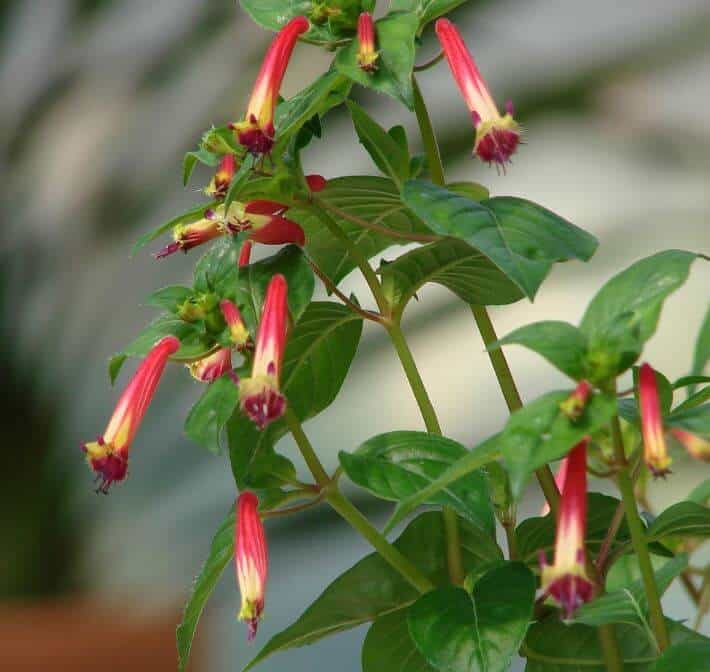
The Cuphea hummingbirds lunch plant, also often called the cigar plant (though this is a different variety in the same genus) and the firecracker plant for the resemblance of its flowers to both, is a popular house plant that can be grown both indoors and outdoors.
Especially lovely when hung from baskets, the flowers of this plant contain nectar, making them a magnet to bees, butterflies, and of course, hummingbirds! The flowers, with their rich cherry-red hue and sunny yellow tips, bloom in early spring and last all the way until fall, attracting pollinators the entire time.
In areas without frost, these plants are especially rewarding, flowering throughout the year.
The hummingbirds lunch plant belongs to the Cuphea genus, made up of around 260 perennially flowering annual plants, which range from semi-woody shrubs to herbaceous plants such as this one. Most species of the genus are native to regions of the United States that enjoy tropical and warm temperate conditions.
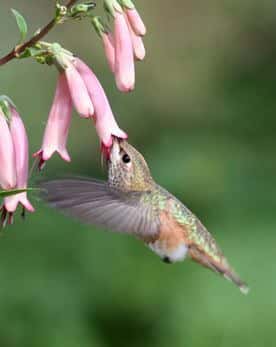
Sometimes, all the species of the genus are generically and collectively referred to as cigar plants and cupheas, the Greek word for “curved” and “bent”.
An adult hummingbird lunch plant can reach heights between 18 and 28 inches, with a maximum spread of 36 inches. It takes a seedling 45 days to reach full maturity.
These moderate growers thrive in USDA hardiness zones 9, 10, 11, and some parts of 8 (in warm conditions) and are excellent in mixed container gardens, window boxes, hanging baskets, and container specimens.
Hummingbird Lunch Plant Care
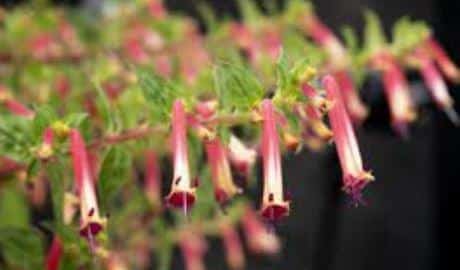
Hummingbird lunch plant care is pretty simple since the plant is generally resistant to heat, drought, pests, and diseases, and requires no deadheading either. However, a few simple gardening measures will help your hummingbird lunch plant live its longest and fullest life!
Here’s how you can best look after your hummingbird lunch plant.
Planting
If you’ve bought the plant in a pot or a plastic bag, you’ll need to repot it and move it to a suitable container—around 12 inches for seedlings.
To do so, start by getting rid of the pot or plastic bag; you can turn the plant upside down and remove the pot by gently squeezing its sides with one hand, while the other holds the plant.
Once the plant is out of its container, gently disturb the root surface with a gardening tool, or even just your fingers, to encourage the outward growth of the roots in their new home. You could also prune any damaged roots before planting.
Post this, hydrate the plant by submerging its root zone in water for around ten minutes while you dig a hole that’s two times the width and depth of the plant’s root ball.
When planting, ensure that the root ball sits level with the ground around the hole if you’re planting the lunch plant directly in the ground. Once you’ve ensured this and refilled the hole, give the plant a thorough watering.
Planting is best done between late spring and midsummer when there is no danger from frost to the plant. However, if you live in an area that doesn’t experience frost, you can plant at any time of the year.
Watering Requirements

Since they’re drought-resistant, adult hummingbird lunch plants don’t require much water to thrive. However, ensure that you water your plant consistently and adequately in its first year in your garden. Saturate the soil well with each watering in this period.
After this period, you can bring down the frequency and amount of watering you do.
While it can be hard to define a specific watering schedule (how much water your plant needs will depend on the temperature, climate, and conditions of the growing area), don’t let the root ball or the soil ever dry out completely; both always need to be moist (and not soggy).
During the summer months, this may mean increasing the frequency of watering.
A good way to figure out if your plant needs water is to check the top couple of inches of the soil. If it’s dry, it’s an indication that you need to water your plant.
Bear in mind that overwatering your plant can be just as harmful as underwatering it. Overwatering and waterlogging can invite a whole host of issues in the form of root and fungal infections in these plants.
Therefore, it’s important that the soil that your hummingbird lunch plant sits in is well-draining soil, and if placed in a container, ensure that there are sufficient drainage holes to keep the roots from lying in water and getting damaged.
Light and Heat
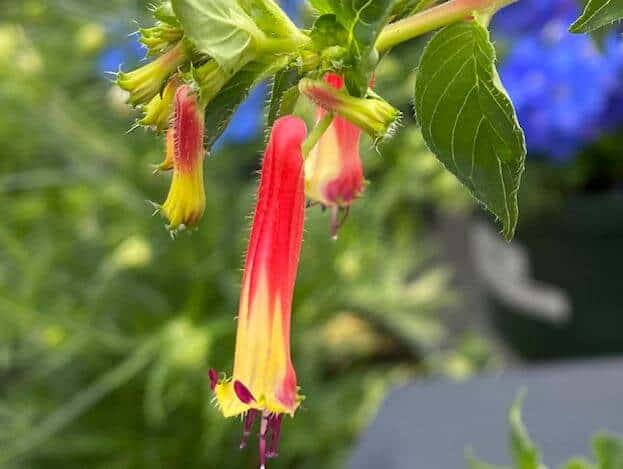
When grown outdoors, hummingbird lunch plants enjoy full, direct sunlight usually, but benefit from partial shade in particularly dry and hot areas. If your plant is going to overwinter indoors, place it somewhere where it can receive adequate direct sunlight.
Hummingbird lunch plants don’t tolerate the cold very well and may perish in frost.
Soil and Fertilizer
Hummingbird lunch plants need moderately fertile, compost-rich soil that drains well but can also retain some amount of moisture. The pH levels of the soil can be alkaline, mildly alkaline, neutral, mildly acidic, or acidic—the hummingbird plant does well enough in all of these.
When it comes to fertilizers, fertilize your plant once in two or three during its growing season (early spring to fall) with a water-soluble fertilizer. Stop fertilizing in the fall (as a rule of thumb, 1st September works) to let your plant prepare for its upcoming dormancy in the winter.
Winterizing
In frost-free areas, the hummingbird lunch plant can be an evergreen perennial. If your area receives frost and snow, bring your plant indoors for the winter, placing it in a sheltered, unheated area.
During these cold months, you won’t need to water your plant very often. Check the soil’s moisture level every couple of weeks and water based on this.
Pruning
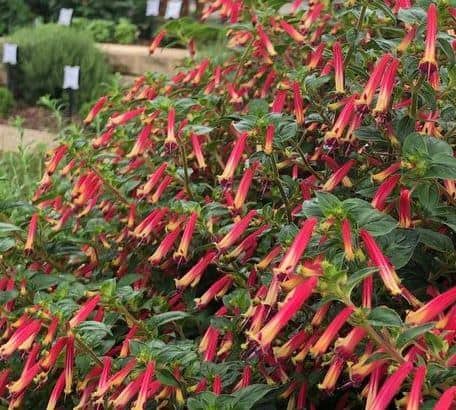
As mentioned earlier, hummingbird lunch plants don’t require deadheading to stimulate the growth of new blooms; they’re self-cleaning plants.
However, if you want to encourage more blooming and branching or shape your plant, pinching it back or pruning it during late spring will help.
Wrapping Up

While hummingbird lunch plants are great for pollinators, that doesn’t necessarily make them safe for human or animal ingestion. Treat all plants as toxic until proven otherwise and keep pets and small children away from these plants.
That apart, enjoy the visual spectacle that is your hummingbird lunch plant!

